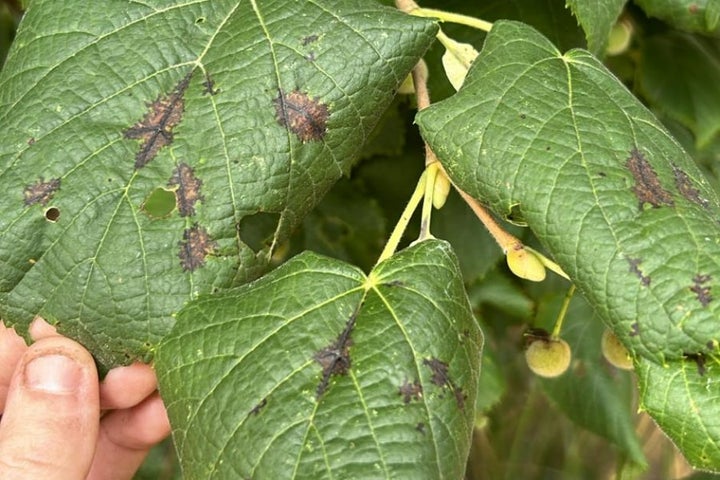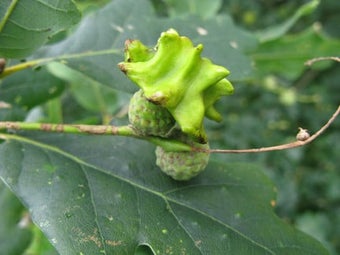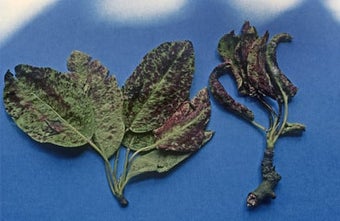
Quick facts
Common name - Lime nail gall mite
Scientific name - Eriophyes tiliae and E. lateannulatus
Plants affected - Lime (Tilia sp.)
Main symptoms - Pale yellow or red pointed tubular structures up to 5-8 mm long on the upper leaf surface
Caused by - Microscopic gall mites
Timing - May-September
What is lime nail gall mite?
Lime nail gall mites are microscopic animals (less than 0.2 mm long) that feed on the foliage of lime trees (Tilia sp.). The mites feed by sucking . They secrete chemicals into the plant tissue that causes the leaves to produce the galls. The mites then suck sap from plant cells lining the gall structure. Like most gall mites there is no harm done to the hosts overall heath and vigour and these animals are part of the that healthy trees support.
There are many different species of gall mite; they are often specific to a single host plant and produce characteristic galls, read more about some others found in gardens.
Survey for lime leaf blotch
Have you seen these dark blotches on lime leaves? We would like to know.
As part of our research, the 911���� would like to know if you have seen dark blotches on leaves of lime trees, like in the picture below. We are working to identify what is responsible for these blotches.
Please submit your records via our (expected time to complete survey = two minutes).

Thank you to everyone who has submitted records so far. Discover other sightings you can report to help our research here .
Symptoms
Between May and June, upper leaf surfaces of lime trees may develop many pale yellow or red pointed tubular structures up to 5-8 mm long. Although the lime nail gall mite disfigures the foliage it has little or no effect on tree growth.

Management
The mite has no impact on the tree’s health or growth and so should be treated as that healthy lime trees support.
Biology
Lime nail gall mites overwinter as non-feeding females in crevices in the , especially near , or underneath scales. In the spring, when the host plant comes into growth, the mites begin feeding and laying eggs. Up to about 80 eggs may be produced at a rate of two to three a day. There may be two or three generations during the summer with both male and female adults being present. In late summer overwintering females are produced which will not lay eggs until the following year.







